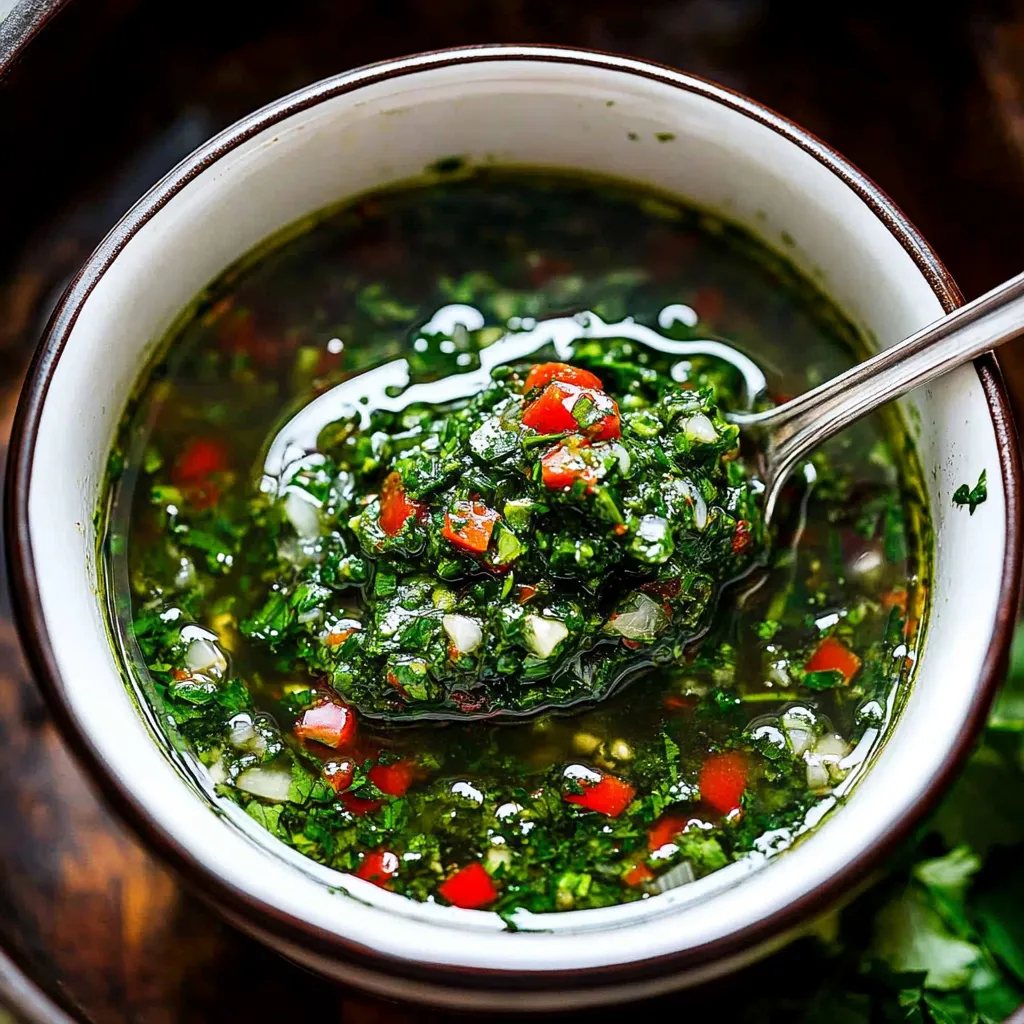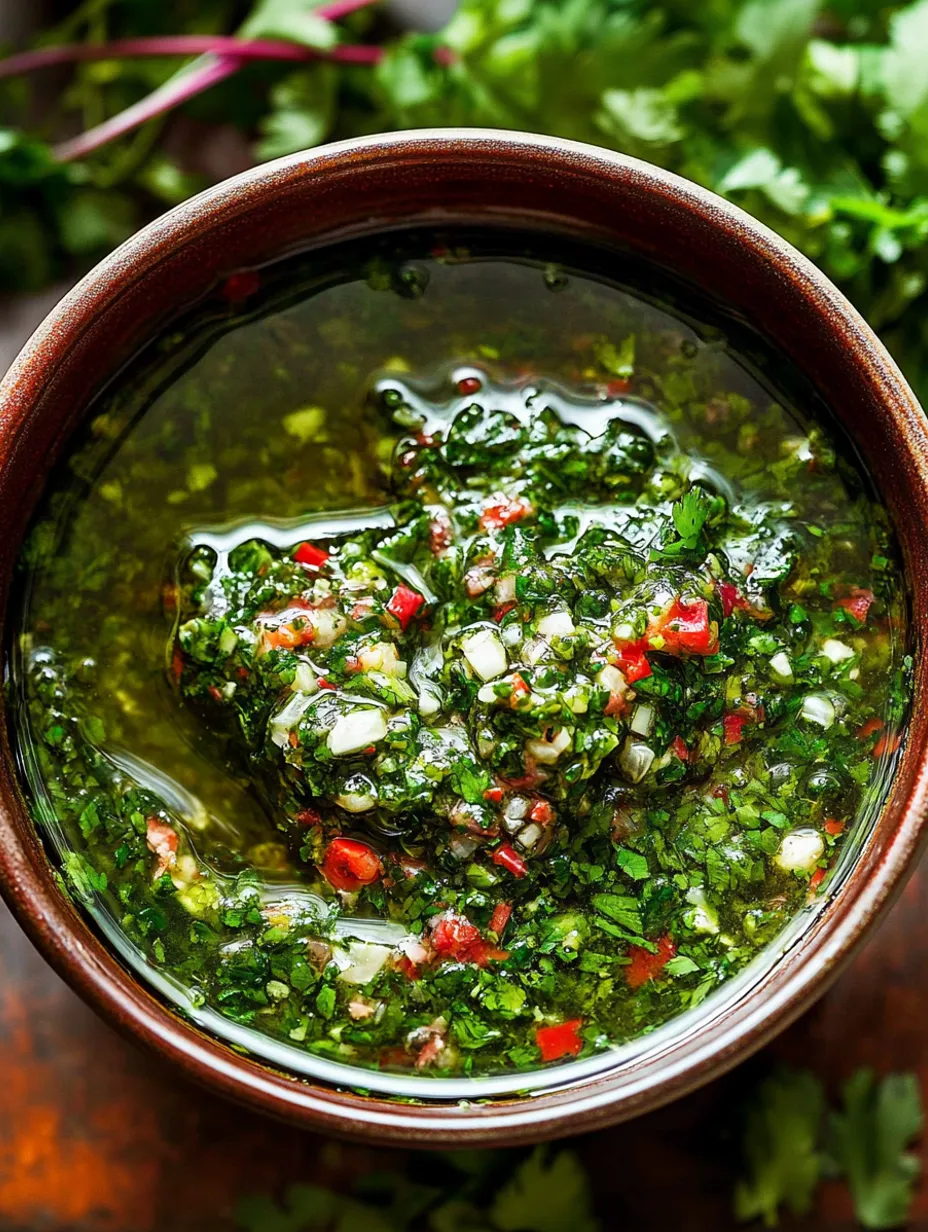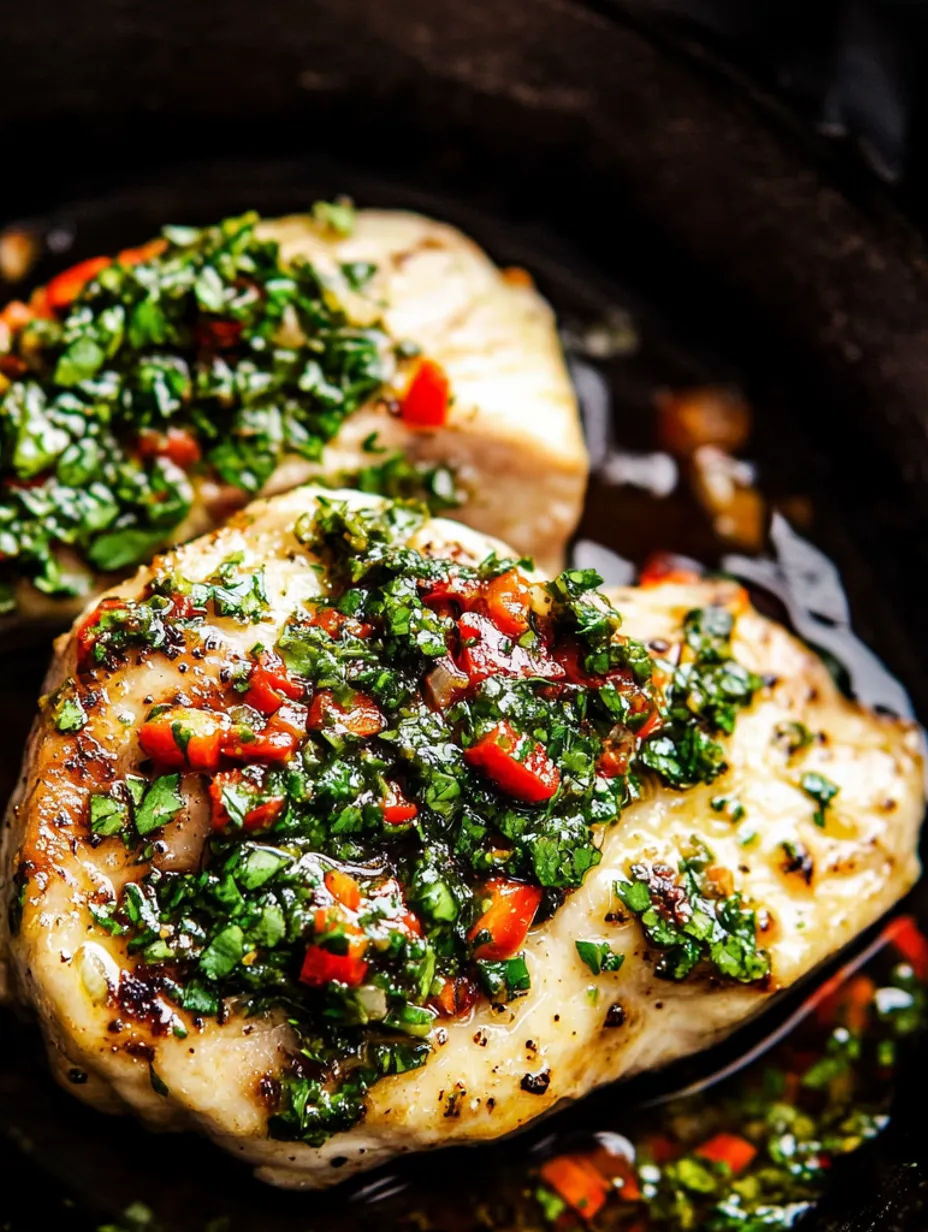 Save
Save
The aroma of chimichurri takes me back to when I was 8, sitting at our rickety kitchen table watching Dad mince parsley with incredible precision. He'd stand there, slightly stooped, his Uruguayan accent growing stronger as he shared tales about his childhood in Montevideo. "En mi país," he'd begin, and I knew we were about to hear something good.
My father picked up his chimichurri skills from my grandpa back during the 1930s, when they'd join neighbors for weekend asados, with everyone contributing something for the grill. Chimichurri wasn't some fancy store-bought condiment – it was just the homemade sauce that went with meat. Kind of how Americans always have ketchup on hand, my dad's family kept chimichurri ready in the kitchen.
During last summer, Dad's health went downhill, but on one of his better days, we made chimichurri together. His hands were too shaky for chopping, so he sat giving me directions like some herb-focused cooking coach. "Más fino!" (Smaller!) he'd call out when my parsley chunks weren't tiny enough. After I'd finished, he dipped his pinky finger in, tasted, and simply nodded. Coming from him, that's basically the highest praise possible.
Authentic Key Components
- Flat-Leaf Parsley - Skip the curly kind that restaurants use as decoration. You need the flat variety that actually has flavor. And yes, those soft stems pack taste too – chop them up as well.
- Garlic - Only use fresh. Those jars of pre-minced stuff might save time, but they've got about as much flavor as their plastic container. Dad would go without rather than use pre-chopped garlic – that's how important this is.
- Dried Oregano - Strangely, the dried version works better than fresh in this recipe. Something about how it releases flavor into the oil. Just check that it still has a scent when you open the container (odorless means it's too old and basically useless).
- Red Wine Vinegar - Don't swap this out for balsamic, white, or whatever's in your pantry. Red wine vinegar provides the right tang without dominating the other ingredients.
- Fresh Red Chili - Dad would tweak the spiciness depending on his dinner guests. More seeds when his card-playing buddies visited, fewer when kids were around. No fresh peppers available? Red pepper flakes will do.
- Olive Oil - No need for the expensive stuff, but maybe don't use your basic cooking oil either. Something mid-range works fine.
- Salt and Black Pepper - Dad always insisted we add these gradually. "You can always put more in," he'd remind me, pointing with his wooden spoon, "but you can't take it out once it's there." I heard this countless times growing up.
 Save
Save
Simple Preparation Steps
Manual ChoppingDon't even think about your food processor or blender. Dad would get so upset seeing anyone turn chimichurri into mush. Real chimichurri has texture – small bits of herbs and garlic floating in oil, not green puree. Yes, it takes more time. No, there's no way around it. Just pick up your knife and start chopping.
Mix Dry IngredientsCombine your chopped parsley, garlic, and chili in a bowl. Sprinkle in dried oregano, rubbing it between your fingers as you add it (this releases the essential oils). Add a bit of salt and pepper – go easy with salt initially; you can adjust later.
Add Liquids AfterPour the vinegar in, stir everything around, then slowly add olive oil while mixing. You don't need any fancy technique – just make sure everything gets mixed somewhat evenly.
Patience Pays OffThe toughest part of making chimichurri isn't the preparation – it's waiting before you eat it. Freshly made chimichurri tastes good, but chimichurri that's had several hours for flavors to blend tastes amazing. Dad always prepared his the morning before an asado. At least let it sit for 10 minutes, but if you can wait 2+ hours, you'll be rewarded.
Final CheckBefore serving, sample some with a piece of bread. Need more salt? Add some. Want more heat? Throw in extra chili. Following the recipe exactly matters less than making it taste good to your preference.
Dad's chimichurri jar was basically an ongoing experiment. He kept adding fresh batches on top of the old stuff, claiming that the remains at the bottom were "improving" the new mixtures. I'm pretty sure this breaks every food safety guideline out there, but he never got ill and insisted it tasted better. I won't suggest you try this approach, just sharing some quirky family cooking traditions.
Ways To Enjoy This Sauce
Transform an ordinary steak by adding chimichurri during the final minute of grilling, then providing more on the side. The heat makes herbs sizzle and creates an aroma that'll have neighbors suddenly dropping by to chat. Dad used to say you could predict how good the cookout would be by counting how many stray dogs gathered at the fence when chimichurri hit the hot grill.
Have friends who don't eat meat? Roast a batch of sweet potatoes, bell peppers, zucchini, whatever veggies you like, then drizzle chimichurri over them while hot. The vinegar balances the sweet caramelized vegetables, and suddenly basic roasted veggies become the highlight of your meal. I found this out accidentally when my fridge contained nothing but vegetables and chimichurri, and now it's a regular dish at my house.
Upgrade your next get-together by toasting baguette slices, spreading goat cheese on top, and finishing with a bit of chimichurri. Guests will think you're really fancy when it actually took minutes to throw together. This is my go-to when I need to bring something to a gathering but don't have much time.
Creative Twists
Reddish VersionFor a change, try making chimichurri rojo by adding smoked paprika and some diced roasted red peppers. It's richer and smokier, pairs wonderfully with pork and chicken. Not my father's traditional style, but even he admitted it tasted good when I made it for him.
Different HerbsThe classic recipe uses only parsley, but you can mix in some cilantro if that's what you prefer. Dad would look at me funny for suggesting this, but he also used to say, "La cocina es para experimentar" (the kitchen is for experimenting).
Lemon TwistSometimes I replace half the vinegar with lemon or lime juice, especially for fish dishes. Dad would probably mumble about this not being "authentic" chimichurri, but he'd still eat it and pretend not to enjoy it while helping himself to more.
Storage Tips
Short TermFresh chimichurri can stay on the counter, covered, all day if you're using it for dinner. The olive oil helps preserve it, and the vinegar's acidity aids too.
Got extras? Put them in a container in the fridge for up to a week. The oil might get a bit firm when cold – this scared me the first time, but it's completely normal. Just pull it out 30 minutes before using and mix well.
Color ChangesYour vibrant green sauce will likely turn darker after a couple days. It's just oxidation, similar to a sliced apple turning brown. Doesn't change the taste at all, so don't worry.
Freezer MethodIf you've made too much, freeze portions in an ice cube tray, then move the cubes to a freezer bag. Use them whenever you want to add quick flavor to soups, stews, or marinades. Not ideal for serving straight, but works great in cooking.
 Save
Save
Dad's Insider Advice
Uniform CutsTry to chop your parsley and garlic to roughly equal sizes. Nobody wants to bite into an unexpected chunk of raw garlic that's way too big.
Ingredient StandardsWith so few components, using good stuff actually matters. This doesn't mean expensive, just fresh and flavorful ingredients.
Serve It HotAlways put chimichurri on warm food, not cold dishes. The heat brings out all the flavors in the herbs and garlic. Dad would get upset seeing anyone putting room temperature chimichurri on cold meat.
At our family reunion last month, I prepared a large batch of Dad's chimichurri. My uncle Miguel, who came to America in the 70s and hasn't returned to Uruguay since, took one bite with his steak and went quiet. I thought something was wrong until I noticed him dabbing his eyes with his napkin. "Esto," he said, pointing to the chimichurri, "esto es mi infancia." This is my childhood. That's the thing about food – sometimes it's more than just a meal, it's a way to travel back in time. I'm happy I can share a small piece of our family history with you.
Recipe FAQs
- → How long will chimichurri stay fresh?
- Store the sauce in a sealed container in the fridge for up to a week. It might thicken in the cold, so bring it to room temp before using. The flavors improve after a night in the fridge.
- → Can I use a blender for chimichurri?
- You can, though chopping by hand keeps the rustic feel and avoids bruising herbs, which can alter the flavor. Blenders can make the herbs too fine and paste-like.
- → What’s different about Uruguayan vs. Argentine chimichurri?
- Uruguayan versions might have more red chili or paprika, while Argentine recipes sometimes include cilantro. Both stick to parsley as the base ingredient.
- → Can I skip the chili in chimichurri?
- Absolutely! The base flavors rely on parsley, garlic, and oil. For mild heat, replace fresh chilies with a sprinkle of red pepper flakes or leave it out entirely.
- → Which meats work best with chimichurri?
- It's perfect over grilled beef like skirt or flank steak. It also pairs beautifully with chicken, pork, lamb, fish, or sausages at a barbecue.
